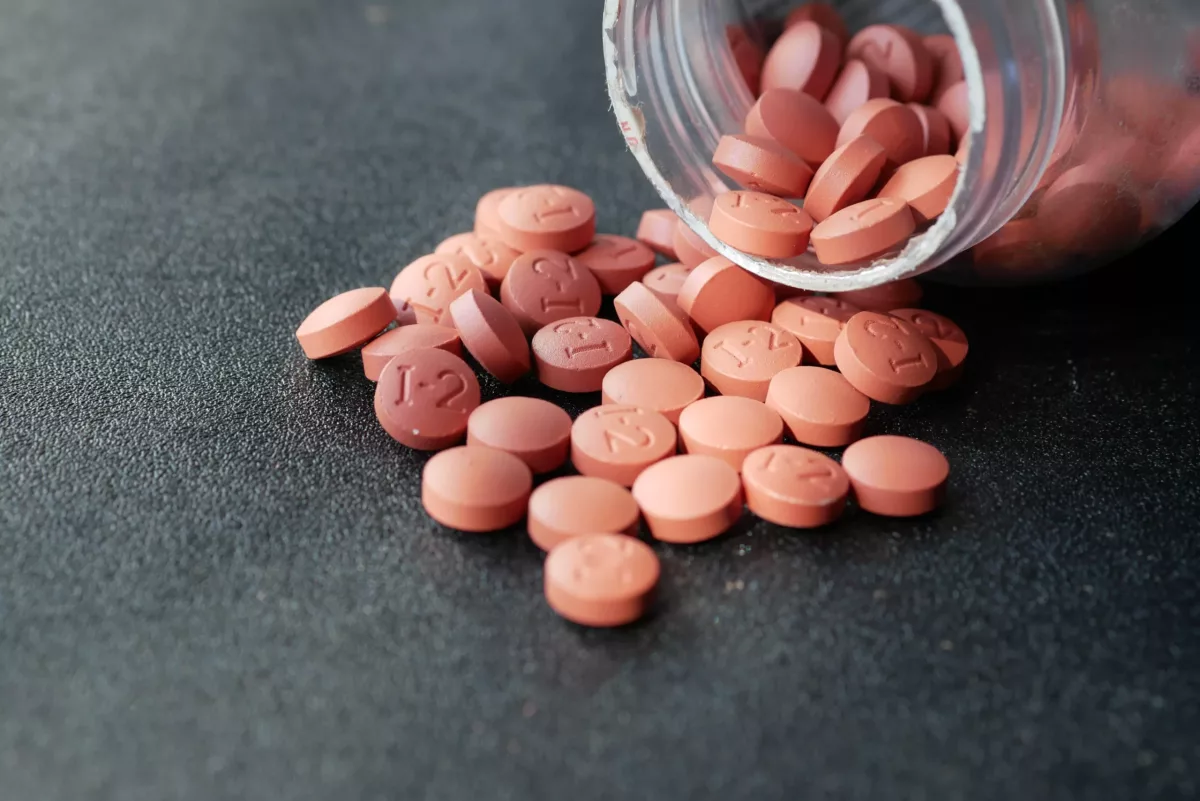A health condition in which a buildup of fats, cholesterol, and other substances occurs on the artery walls is called atherosclerosis. Sometimes, this condition is called arteriosclerosis, meaning the same thing, but there is a difference between these medical terms. For example:
- Arteriosclerosis – It often occurs when blood vessels that carry oxygen to the lungs, brain, and other structures and organs of the body become stiff and thick. These blood vessels are called arteries, and normally, they should be flexible and elastic. Over time, artery walls can harden. This condition is called hardening of the arteries.
- Atherosclerosis – this is a type of arteriosclerosis in which cholesterol, fat, and other substances build up on the artery walls, causing reduced or blocked (sometimes) blood flow.
These deposits on the artery walls are also called plaques. In some cases, these plaques may burst, which may lead to a blood clot.
While atherosclerosis is frequently considered a heart condition, it may impact any artery in the body. Fortunately, this is a treatable condition. Usually, healthy lifestyle habits help prevent or treat this condition.
Symptoms
While people with mild atherosclerosis do not experience any symptoms, in more severe cases, people may notice life-threatening symptoms. Usually, people with this condition experience symptoms when the artery becomes too narrow or blocked, which limits blood flow to organs and tissues. In some cases, a blood clot that forms in the arteries blocks the blood flow, which may lead to a stroke or myocardial infarction.
Generally, the atherosclerosis symptoms occur depending on where the plaques occur. Check below some symptoms of this condition according to the location of plaques:
- Heart arteries – Chest pain or pressure (also called angina)
- Arteries of the brain – When plaques develop on the artery walls that supply the brain with oxygen-rich blood, you may experience the following symptoms. These include temporary loss of vision, drooping muscles in the face, slurred speech, sudden numbness or weakness in the arms or legs, difficulty speaking, and others. In general, previous symptoms occur due to a transient ischemic attack (TIA), which, without treatment, may lead to a stroke.
- Arteries in the legs and arms – Some people may experience pain in the legs when walking (also known as claudication) or arms. Commonly, claudication is a symptom of peripheral artery disease (PAD).
- Kidney arteries – People who develop plaques in the arteries of the kidneys may experience hypertension (high blood pressure) or even kidney failure.
If you think you have this health condition, do not hesitate to see a doctor for a checkup. Early diagnosis and treatment may help prevent severe symptoms and life-threatening complications, such as myocardial infarction, stroke, and others.
When Should I go to the Emergency Room?
Go to the nearest emergency room or call 911 in the U.S. if you experience any of the following symptoms. Examples include:
- Sudden weakness or numbness in the legs or arms
- Difficulty speaking or slurred speech
- Temporary or sudden loss of vision in one or both eyes
- Drooping muscles in the face
Causes
In most cases, this condition worsens gradually and may begin in early childhood. Healthcare professionals do not know why it happens, but they think damage to the inner layer of the artery could play a role. Damage to the artery walls may happen due to the following health conditions. For example:
- Hypertension (high blood pressure)
- High cholesterol
- Increased levels of triglycerides in the blood
- Smoking
- Diabetes
- Insulin resistance
- Obesity (excessive body weight)
- Certain chronic health conditions that occur for unknown reasons (including arthritis, lupus, psoriasis, inflammatory bowel disease, and others)
When the inner wall of an artery is damaged, blood cells and other substances begin to collect at the injury site. Over time, cholesterol, fats, and other substances may also collect on and in the walls of the heart arteries (also called coronary arteries). As a result, these arteries become narrowed, limiting blood flow to multiple organs and tissues in the body. Sometimes, plaques may burst and form a blood clot.
Risk Factors
There are two types of factors that could increase your risk of developing atherosclerosis. These include controllable and uncontrollable factors. Check below some uncontrollable risk factors for atherosclerosis:
- Aging
- A family history of heart disease or stroke
- Gene changes (mutations) that contribute to atherosclerosis
- Inflammatory diseases such as lupus, inflammatory bowel disease (IBD), psoriasis, and others
Check below some controllable risk factors:
- Hypertension (high blood pressure)
- Lack of physical exercise
- Excessive body weight (obesity)
- Sleep apnea
- Smoking
- High cholesterol
- Unhealthy diet
- Diabetes
What Are The Possible Complications of Atherosclerosis?
The complications, like symptoms of atherosclerosis, depend on the exact location of plaques. Check below some examples:
- Coronary artery disease – The arteries close to the heart are called coronary arteries. When plaques appear in these arteries, the condition is called coronary artery disease. Without treatment, it may lead to chest pain, a heart attack, or heart failure.
- Carotid artery disease – In such cases, plaques occur in the arteries close to the brain. Some possible complications include transient ischemic attack and stroke.
- Peripheral artery disease – This complication happens when atherosclerosis appears in the arteries of the arms and legs. Some possible complications of peripheral artery disease include blocked blood flow in the affected areas, gangrene, and others.
- Aneurysms – In some cases, plaques may form a bulge in the wall of the artery (aneurysm). It may develop in any part of the body and usually does not cause symptoms. However, if an aneurysm bursts, it may cause life-threatening bleeding inside the body.
- Chronic (long-term) kidney disease – Narrowing of the arteries that lead to the kidneys may also occur due to atherosclerosis. In such cases, it may lead to long-term kidney disease because they need blood flow to remove waste and fluids from the body.
How to Prevent Atherosclerosis?
The following tips are helpful for both preventing and treating atherosclerosis. Examples include:
- Manage your blood pressure, blood sugar, and cholesterol
- Try to get and maintain a healthy weight
- Dietary changes (add to your diet more fresh fruits, vegetables, and whole grains)
- Quit smoking (if you face problems with smoking cessation, discuss it with your healthcare professional)
- Regularly exercise
Diagnosis
To diagnose this condition, doctors often perform a physical examination and listen to your heart. They may also ask some questions about the symptoms and medical and family history. The following tests are often performed to rule out other conditions that cause similar symptoms and confirm atherosclerosis. Check below some examples:
- Blood tests – These tests are used to check blood sugar and cholesterol levels. If results show increased levels of cholesterol and sugar in the blood, it significantly increases the risk of atherosclerosis. Doctors may also perform a C-reactive protein (CRP) test. It helps check a protein often associated with inflammation of the arteries.
- Electrocardiogram (ECG or EKG) – This is a quick test used to measure the electrical activity of the heart. During this test, doctors attach some sensors (electrodes) to the chest, arms, and legs (sometimes). An EKG can show reduced blood flow to the heart muscle.
- Exercise stress tests – During this test, doctors will check the heart while you walk on a treadmill or ride a stationary bike.
- Echocardiogram – Doctors perform this test to get images of the heart. It uses sound waves to make pictures, and it can show the size and shape of the structures of the heart.
- Doppler ultrasound – During this test, doctors use a specific ultrasound device to check blood flow at different points in the body.
- Ankle-brachial index (ABI) – This test is used to measure blood pressure in the ankle and arm to compare them. If there is a difference, it may indicate peripheral artery disease.
Other Tests
- Cardiac catheterization and angiogram – This test is used to determine the exact location of plaques in the coronary arteries.
- Coronary calcium scan (also called a heart scan) – This test uses a CT (computed tomography) scan to check for calcium deposits in the artery walls.
- Other imaging tests – Healthcare professionals may perform other imaging tests to study the arteries. These include MRA (magnetic resonance angiography) or PET (positron emission tomography).
Treatment
While treatment for people with atherosclerosis is often different, doctors usually recommend lifestyle changes (such as dietary changes, physical exercises, and others), medicines, heart procedures, or heart surgery. Sometimes, lifestyle changes are enough to treat atherosclerosis.
Medicines
The following medicines are usually prescribed by doctors to reverse the effects of atherosclerosis. Check below some examples:
- Statins and other cholesterol medications – These medications are used to reduce plaque buildup as well as decrease low-density lipoprotein (LDL) cholesterol. However, the most common type of medicine recommended by doctors is statins. Sometimes, physicians may recommend other types, including Niacin, Fibrates, and Bile acid sequestrants.
- Aspirin – This medicine is used to thin the blood and prevent blood clot formation. It also helps reduce the risk of myocardial infarction or stroke. However, before taking this medicine, consult with your doctor. Otherwise, it may lead to unpleasant outcomes.
- Blood pressure medications – These medicines cannot reverse the effects of atherosclerosis, but may help reduce high blood pressure.
- Other medicines – Doctors may prescribe other medicines along with previous ones to treat conditions that increase the risk of atherosclerosis.
- Fibrinolytic therapy – This treatment option is often recommended when a blood clot blocks blood flow. In general, fibrinolytic therapy is used in severe cases.
Surgery and Other Treatments
The following treatments are often recommended by doctors when a severe blockage in an artery occurs. For example:
- Angioplasty and stent placement (also known as percutaneous coronary intervention) – This treatment is used when an artery is severely clogged. During this procedure, doctors use a thin and flexible tube (catheter) and insert it into a major blood vessel, usually in the groin. Therefore, they will guide it to the narrowed or blocked part of the artery to place a stent that helps keep the artery open and improve blood flow.
- Endarterectomy is a surgery in which surgeons remove fatty buildup from the walls of a narrowed or clogged artery.
- Coronary artery bypass graft (CAGB) surgery – During this treatment, surgeons will take healthy blood vessels from another part of the body and make a new path for blood in the heart. CABG surgery is often recommended for people who have multiple narrowed arteries.
Frequently Asked Questions
What is the life expectancy of someone with atherosclerosis?
Usually, people who get treatment for the condition can live a normal lifespan. However, if you ignore the symptoms and do not get treatment, your life expectancy is shortened. For example, 16 years with a heart attack, 10 with heart failure, and even more after a stroke.
What food should I avoid for atherosclerosis?
Once you are diagnosed with atherosclerosis, you should avoid the following foods. For example, bacon grease, shortening and margarine, tropical oils (including coconut, palm, and palm kernel), animal fats (such as butter and lard), and hydrogenated fats.
What is the cause of arteriosclerosis?
This is a type of vascular disease in which blood vessels that carry oxygen-rich blood to multiple structures and organs of the body become narrowed or blocked. Usually, people develop this condition due to high cholesterol, hypertension (high blood pressure), diabetes, and some genetic changes. If you have additional questions, ask your healthcare provider.




